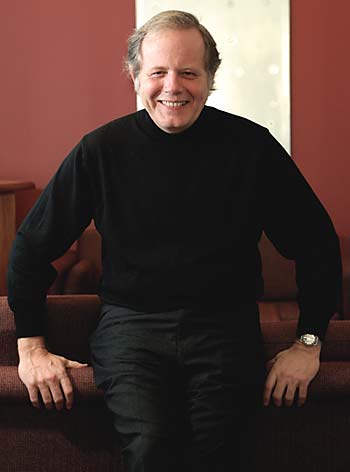The voice in early music by Dominique Olivier
/ May 1, 2002
Version française...
There's no intermediary between the
music and the listener. Moreover, the voice can do things that instruments
can't.
The choir of the Studio de musique
ancienne de Montréal (SMAM) has become one of the city's institutions. For the
past 27 years artistic director Christopher Jackson and his singers have shared
not only a vision of music, but a development that has paralleled the growth of
early music in Quebec. From its first tentative forays into baroque singing to
the in-depth textual research now carried out by experts in this repertoire, the
interpretation of the music has continued to evolve.
 Jackson figures as a pioneer in the
field and looks back on his initial efforts with some irony. He has always been
fascinated by voice and the repertoire of the sixteenth and seventeenth
centuries, and, like everyone else, has gone through the regulation training.
"We were very caught up in the surface of the music," he remembers. "We eagerly
consulted treatises and considered them as biblical texts. Of course, they
provided important data on how to attack trills, how long the notes should be,
and so on. But now I feel these are secondary considerations. One of the big
mistakes we used to make was to always quote instruments as an example for
singers, whereas today it's the exact opposite!" Jackson figures as a pioneer in the
field and looks back on his initial efforts with some irony. He has always been
fascinated by voice and the repertoire of the sixteenth and seventeenth
centuries, and, like everyone else, has gone through the regulation training.
"We were very caught up in the surface of the music," he remembers. "We eagerly
consulted treatises and considered them as biblical texts. Of course, they
provided important data on how to attack trills, how long the notes should be,
and so on. But now I feel these are secondary considerations. One of the big
mistakes we used to make was to always quote instruments as an example for
singers, whereas today it's the exact opposite!"
Nevertheless, it was thanks to these
exploratory efforts that a particular approach to vocal music was revived--one
that we cherish today. "The typical voices of the seventies and eighties are
straight, rather small in nature, with a great deal of flexibility, in the style
of Emma Kirkby or Nigel Rogers. There's a big difference with the operatic
voice, which has a very considerable vibrato and a great deal of power," says
Jackson. "It's certainly true that if you spend years working on projecting your
voice over a symphony orchestra you lose flexibility."
It is this flexibility that is essential to the very special form of
expression that is the heart of the baroque art form. "It's what is beneath the
surface that's important. Now nobody researches treatises. The idea is to
concentrate on an environment, on images, rather than on the length of notes.
The baroque vocal art is rich in contrasts and arose in an era when composers
were trying out all sorts of things," Jackson emphasizes. He does not hide his
preference for voice over instruments. "It's a more direct medium," he says.
"There's no intermediary between the music and the listener. Moreover, the voice
can do things that instruments can't. I always try to exploit this flexibility
to the maximum and to strive for as much colour as possible to give life to a
type of music that needs a lot of it!" Interpretations of baroque music by
Jackson and the SMAM choir are recognized for their warmth, colour, and
profoundly human and sensual aspects, demonstrated in such performances as its
recording of "Heavenly Spheres," described as "astounding" by the Monde de la
musique in 1999 and
that year's winner of the Félix (ADISQ) prize in the "classical music,
orchestras and large ensembles" category.
What Jackson calls musical hermeneutics
has also gained in stature with time and experience. He seeks more and more to
find the key to a work, to understand liturgical texts in the context of the
time, and decipher what, in the music, translates this understanding. "It's a
little like being a detective!" he says, teasing the musician in himself. His
musicians are carried along by his enthusiasm, and he feels they should be
absolutely committed. "But they know me well now! I shrug, and they know that I
mean." Letting singers give free rein to their musical sense is also an
important component in the performance that Jackson is seeking. He is careful to
apply the same criteria to baroque and Renaissance music, the latter being
another period that fascinates him. "In the second half of the sixteenth
century, as music evolved, the boundaries of expression became far stricter,
whereas quality of sound and clarity assumed greater importance. You have to
concentrate more on the architecture of the music, which resulted from the use
of polyphony."
In SMAM'S last concert of the 2001-2002 season, Jackson will conduct music by
one of his most revered composers: Monteverdi, who forms a bridge between the
Renaissance and the baroque period. The program, entitled "Il Divino
Monteverdi," will feature madrigals and motets by the maestro di cappella of St. Mark's Basilica in
Venice.
The SMAM choir and chamber ensemble will
perform under the baton of Christopher Jackson, at Saint-Léon de Westmount
Church, Sunday, May 5, at 8 p.m.
[ Translated by Jane
Brierley]
Version française... |
|


